- AI Fire
- Posts
- 🧑💻 AI Won't Replace You, But Someone Using This Method Will
🧑💻 AI Won't Replace You, But Someone Using This Method Will
Your job is safe if you know how to use AI correctly. This plan shows you how to automate boring tasks & focus on the "human skills" that really matter.

How do you really feel about using AI for your job? |
Table of Contents
Introduction
We are living in a strange time. Maybe you just finished school, or maybe you have been working for a few years, and you look at the job market. What do you see? News about companies cutting jobs, fewer job ads, and everyone talking about Artificial Intelligence (AI).
AI seems to be in every industry. This might make you feel a little worried.

You have probably heard this sentence: "You will not be replaced by AI. You will be replaced by someone who knows how to use it!"
But what does that really mean?
The truth is, some people are moving up in their jobs faster than ever because of AI, while other people feel left behind. Today, we will talk about that truth. We will look at a clear plan for you to use AI. This plan can help you work better, be more valuable, and really stand out in your job.
This article will give you real steps you can do right now. It doesn't matter if you are looking for your first job or trying to become the most important person in your company. These ideas will help you use AI in the right way and build skills that no one can replace.
Part 1: Are You Using AI Like A Fancy Calculator?
Let's start with a big problem: many people are using AI... in the wrong way.
Right now, many of us have tried using AI. But what do we use it for? Usually, very basic things:
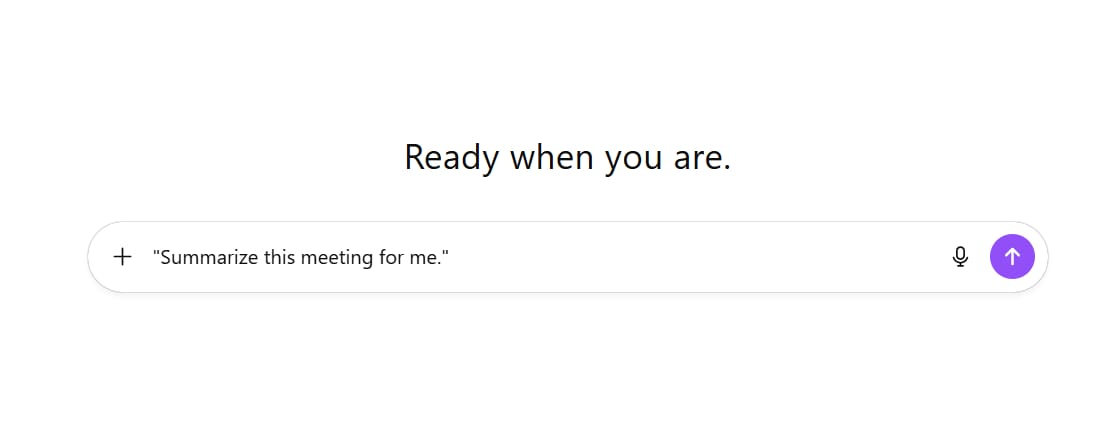
"Summarize this meeting for me.""Make this email sound better.""Find ideas for this article."
Using AI for these things is okay. It's like having a very fancy calculator just to do simple addition. It's helpful, but you are wasting most of its power.
It doesn't matter what tool you use. It could be ChatGPT, Gemini, Grok, or Perplexity. The important thing is how you think about it.
Think of AI like a partner, or a very fast, smart helper who works for you.
Using AI at "Level 1" (the wrong way) is when you use it like a search engine or a grammar checker. You ask it to do one small thing, and you get a result.
Using AI at "Level 2" (the right way) is when you treat it like a partner. You give it a role, you give it context (the background situation), and you ask it to think with you.
Look at this example:
Level 1 Way (Not very good):
"Write an email to a client saying we are late."

Level 2 Way (Very good):
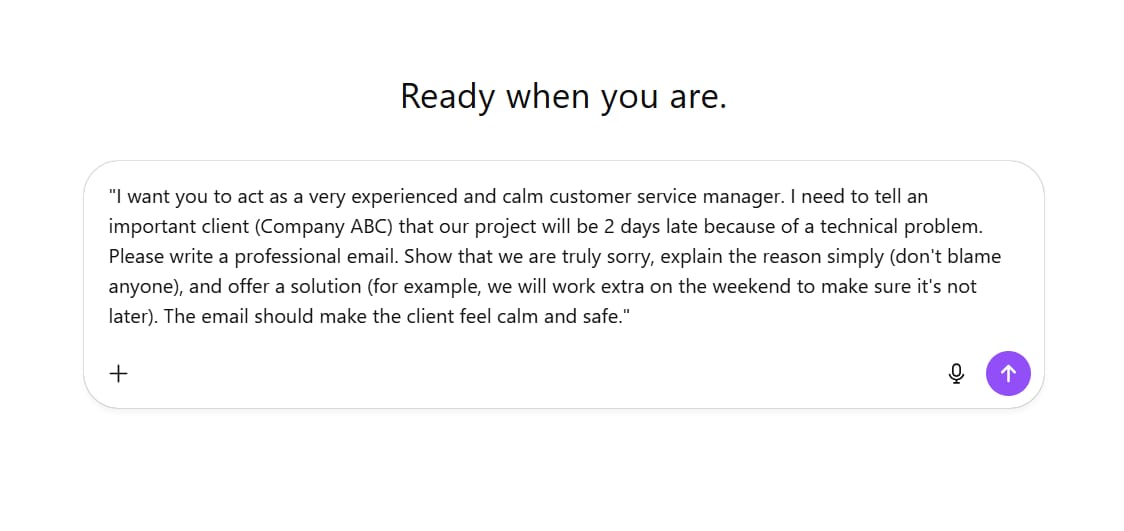
"I want you to act as a very experienced and calm customer service manager. I need to tell an important client (Company ABC) that our project will be 2 days late because of a technical problem. Please write a professional email. Show that we are truly sorry, explain the reason simply (don't blame anyone), and offer a solution (for example, we will work extra on the weekend to make sure it's not later). The email should make the client feel calm and safe."The Result:
Subject: Update on Project Timeline
Hi [Client’s Name],
I wanted to let you know about a small delay with our current project. Due to an unexpected technical issue, our delivery will be 2 days later than planned.
We’ve already identified the cause and our team is working hard to resolve it. To minimize the delay, we’ll be working through the weekend so the final handover will not slip beyond this short extension.
We sincerely apologize for the inconvenience and truly appreciate your understanding. Please rest assured that maintaining quality and reliability remains our top priority.
If you’d like, I can share a quick progress update call tomorrow to walk you through the revised schedule.
Best regards,
[Your Full Name]
Customer Service Manager
[Your Company Name]
[Your Contact Information]See the difference? The second way gives AI a role, context, and a clear goal. The result you get will be much better. AI should help you do bigger and better things, not just make your emails sound a little nicer.
Learn How to Make AI Work For You!
Transform your AI skills with the AI Fire Academy Premium Plan - FREE for 14 days! Gain instant access to 500+ AI workflows, advanced tutorials, exclusive case studies and unbeatable discounts. No risks, cancel anytime.
Part 2: The Power Of "Prompt Recipe Books" (Your Own AI Guidebook)
Here is a big change that not many people know about: "prompting packs" (or "prompt recipe books").
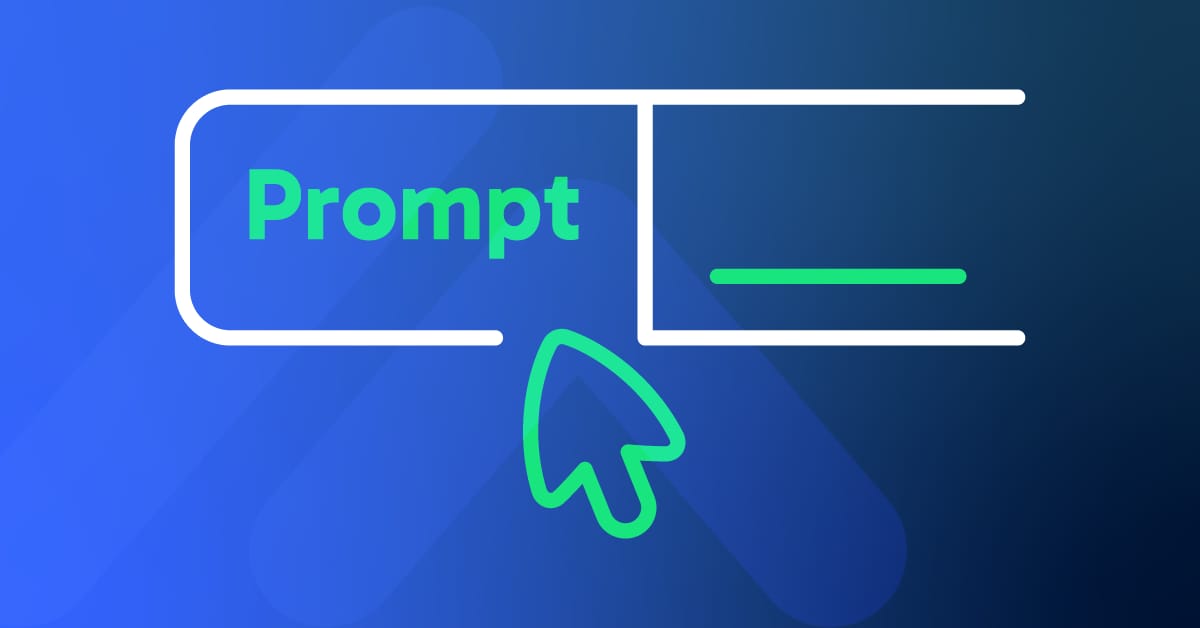
You can think of these as ready-made "recipes" that you create (or find) for your specific job. You can use them again and again for research, learning news, making plans, creating reports, writing summaries, and so much more.
These "recipes" save you hours. Instead of thinking about what to tell the AI every time, you just copy your saved recipe, change a few small details, and get a high-quality result right away.
Jobs that usually take you 1, 2, or 3 hours can now be done in just 10 or 20 minutes.
The main lesson is: Learn to work well with AI. Think of AI as a friend who helps you get rid of all the boring, repetitive work you used to do.
But there is one important catch: even if you have all these amazing AI tools, if you cannot organize your thoughts clearly, they won't help you much. And that brings us to something really important...
Building Your First "Prompt Recipe Book"
Let's create a few recipes right now. You can copy these into a Google Doc or Notion file to use later.
Example 1: Recipe Book for a Social Media Marketer
Goal: Plan content for the whole week and write drafts.
Recipe 1: Brainstorming Ideas
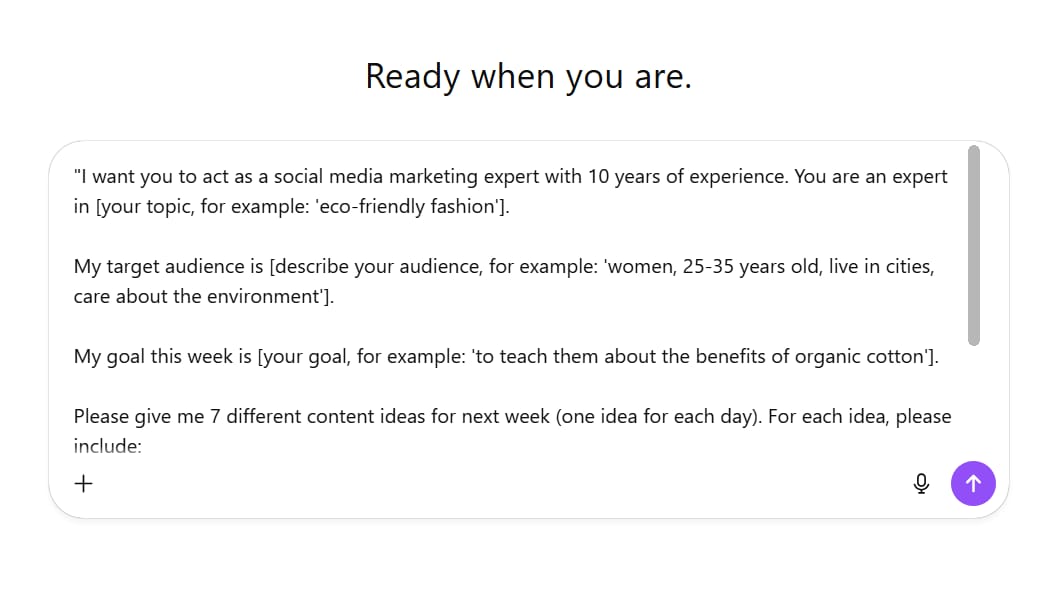
"I want you to act as a social media marketing expert with 10 years of experience. You are an expert in [your topic, for example: 'eco-friendly fashion'].
My target audience is [describe your audience, for example: 'women, 25-35 years old, live in cities, care about the environment'].
My goal this week is [your goal, for example: 'to teach them about the benefits of organic cotton'].
Please give me 7 different content ideas for next week (one idea for each day). For each idea, please include:
Format: (example: Instagram Reel, Carousel post, short blog post, Q&A Story)
Catchy Title:
Main Point: (explain the idea in one sentence)"The result:
🧠 Social Media Content Plan Template (7 Days)
Your role: Social Media Marketing Expert (10 years experience)
Expertise: [insert your topic]
Target audience: [insert audience details]
Weekly goal: [insert your goal]
Day 1
Format: [ex: Instagram Reel]
Catchy Title: [attention-grabbing headline]
Main Point: [1-sentence summary of what the post teaches or inspires]
Day 2
Format:
Catchy Title:
Main Point:
Day 3
Format:
Catchy Title:
Main Point:
Day 4
Format:
Catchy Title:
Main Point:
Day 5
Format:
Catchy Title:
Main Point:
Day 6
Format:
Catchy Title:
Main Point:
Day 7
Format:
Catchy Title:
Main Point:
If you tell me:
1️⃣ your topic/expertise,
2️⃣ your target audience, and
3️⃣ your goal this week,
I’ll instantly fill out all 7 ideas for you — with catchy titles, format suggestions, and one-line summaries tailored to your brand.Recipe 2: Writing a Draft
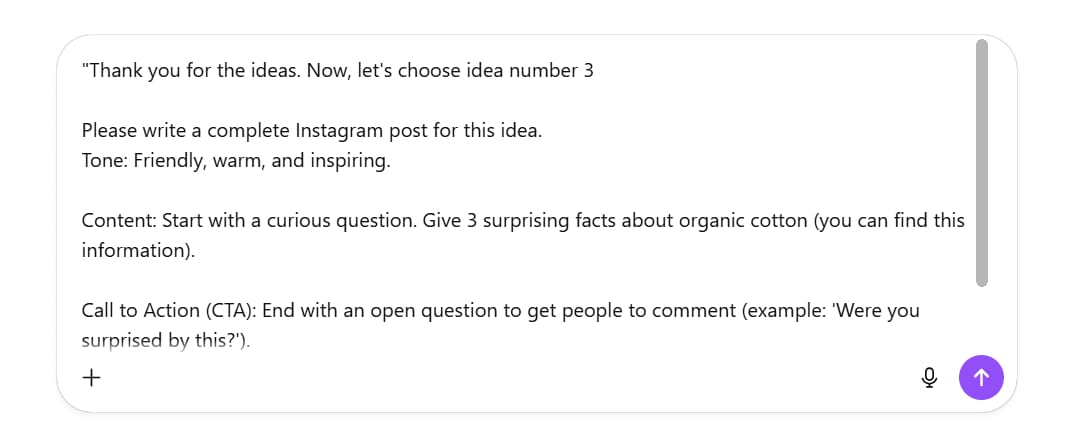
"Thank you for the ideas. Now, let's choose idea number 3
Please write a complete Instagram post for this idea.
Tone: Friendly, warm, and inspiring.
Content: Start with a curious question. Give 3 surprising facts about organic cotton (you can find this information).
Call to Action (CTA): End with an open question to get people to comment (example: 'Were you surprised by this?').
Hashtags: Give me 5 main hashtags and 3 smaller (niche) hashtags about eco-friendly fashion."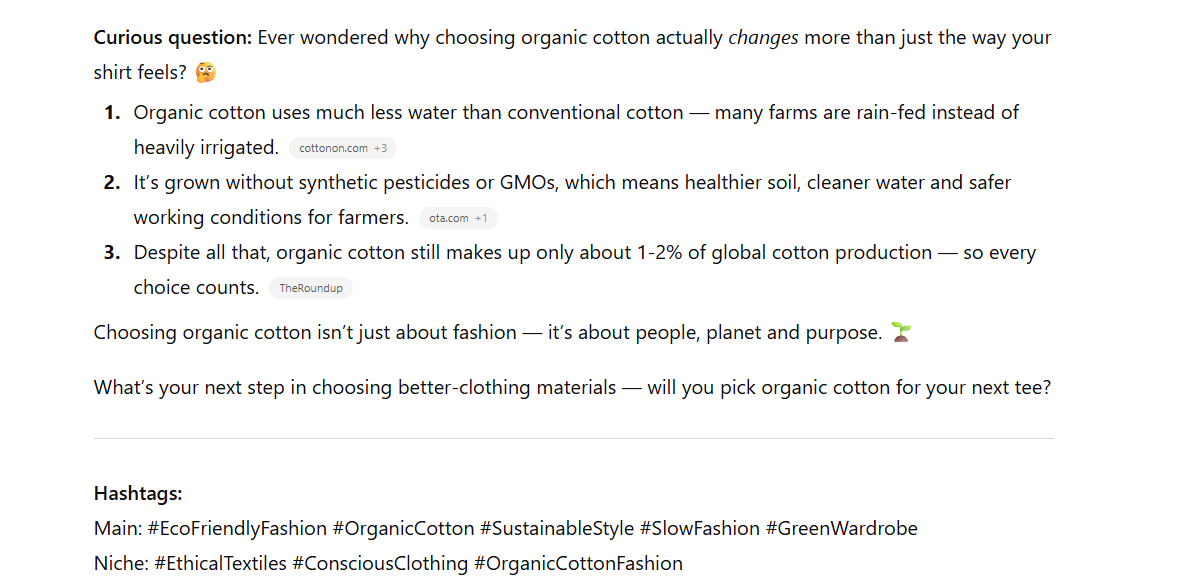
Example 2: Recipe Book for a Salesperson
Goal: Research a new client and write the first email to them.
Recipe 1: Quick Research
Recipe 2: Cold Email Draft
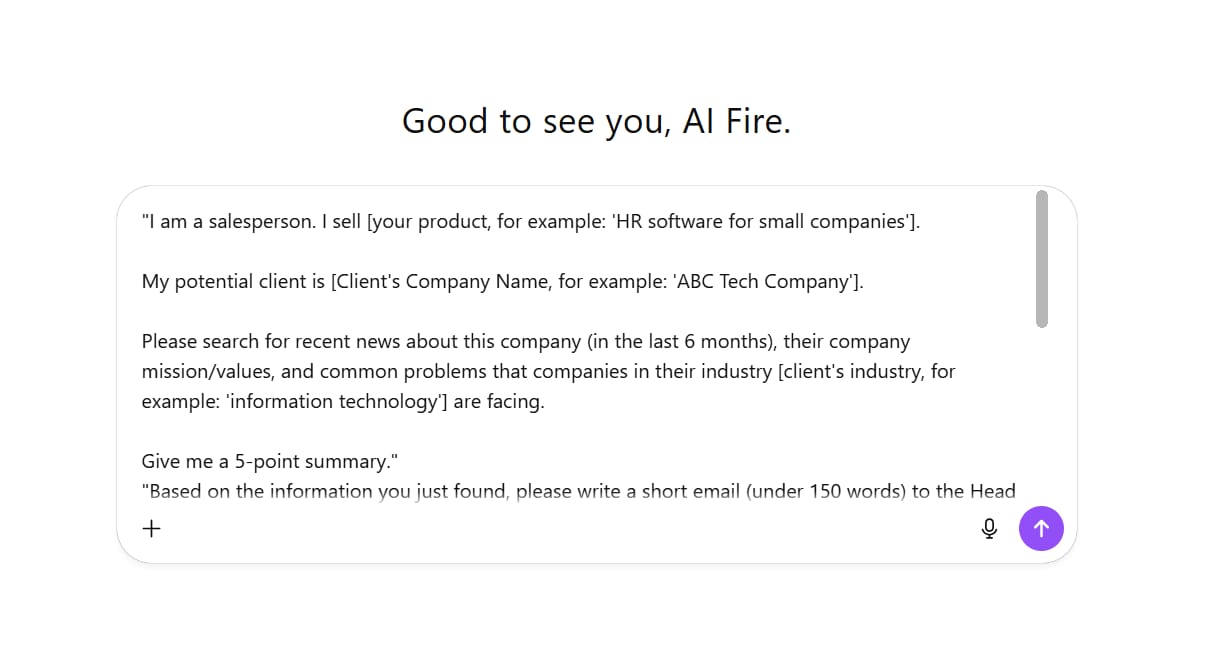
"I am a salesperson. I sell [your product, for example: 'HR software for small companies'].
My potential client is [Client's Company Name, for example: 'ABC Tech Company'].
Please search for recent news about this company (in the last 6 months), their company mission/values, and common problems that companies in their industry [client's industry, for example: 'information technology'] are facing.
Give me a 5-point summary."
"Based on the information you just found, please write a short email (under 150 words) to the Head of HR at ABC Tech Company.
Goal: The goal is not to sell. The goal is to get a 15-minute phone call.
Personalize: Start by mentioning [a piece of news or a company value, for example: 'their focus on growing talent' that you found above].
Connect the problem: Connect that to how [your product] can help solve [a common problem, for example: 'keeping good employees'].
Clear Ask: Ask for a 15-minute call next week.
Subject Line: Suggest 3 short subject lines that do not sound like spam."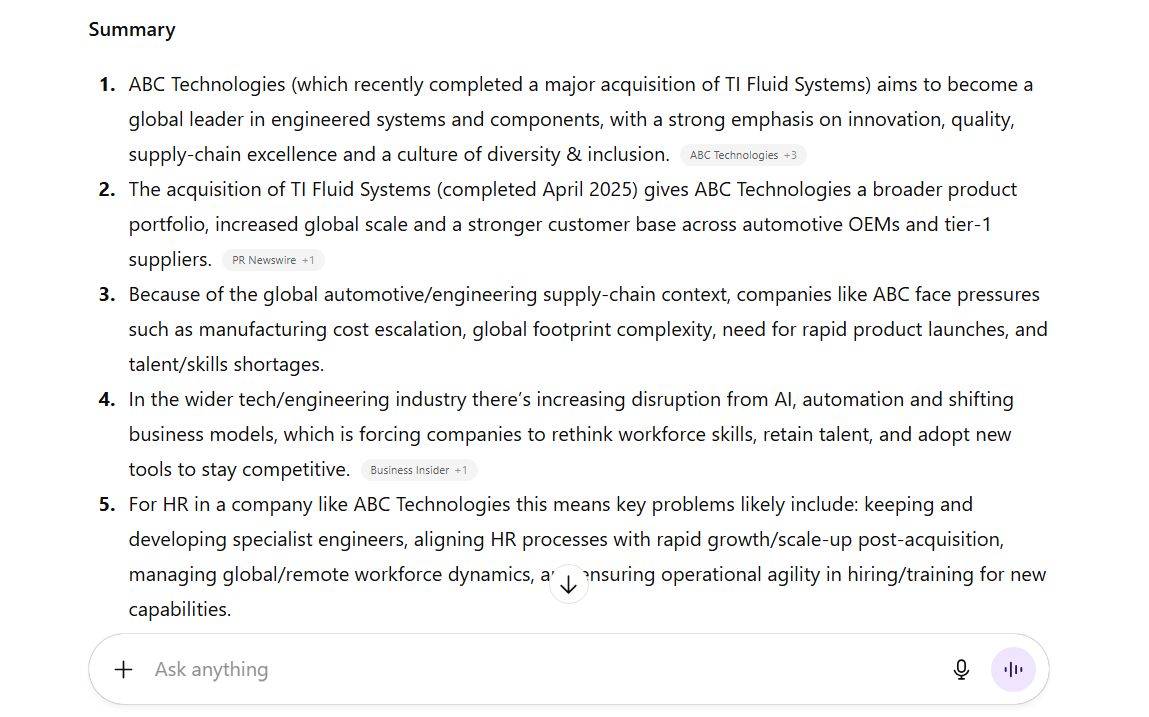
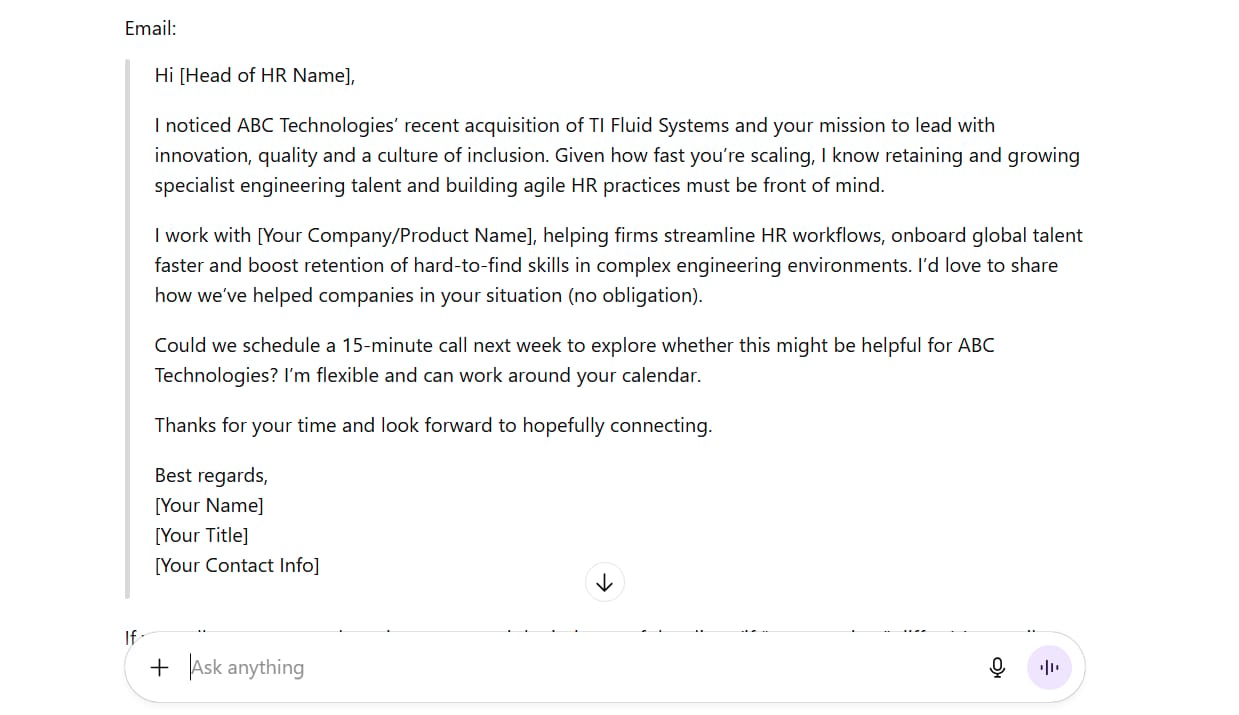
Example 3: Recipe Book for a Developer
Goal: Explain code and find bugs.
Recipe 1: Code Explanation
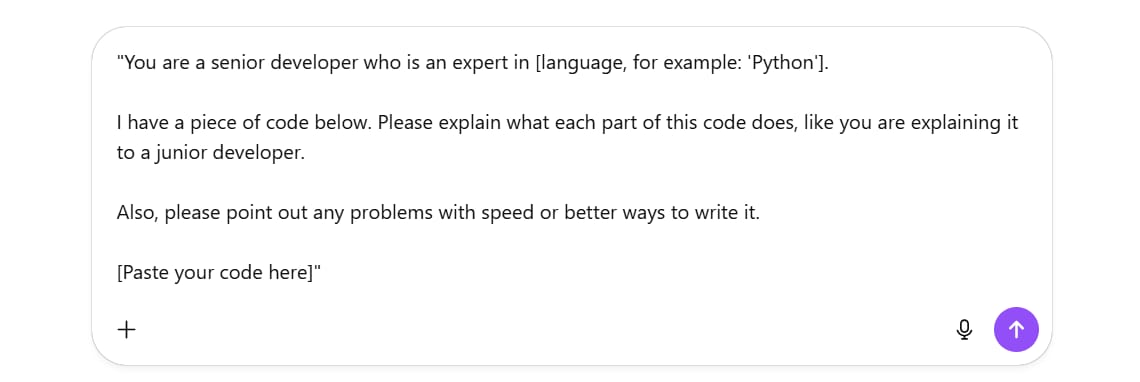
"You are a senior developer who is an expert in [language, for example: 'Python'].
I have a piece of code below. Please explain what each part of this code does, like you are explaining it to a junior developer.
Also, please point out any problems with speed or better ways to write it.
[Paste your code here]"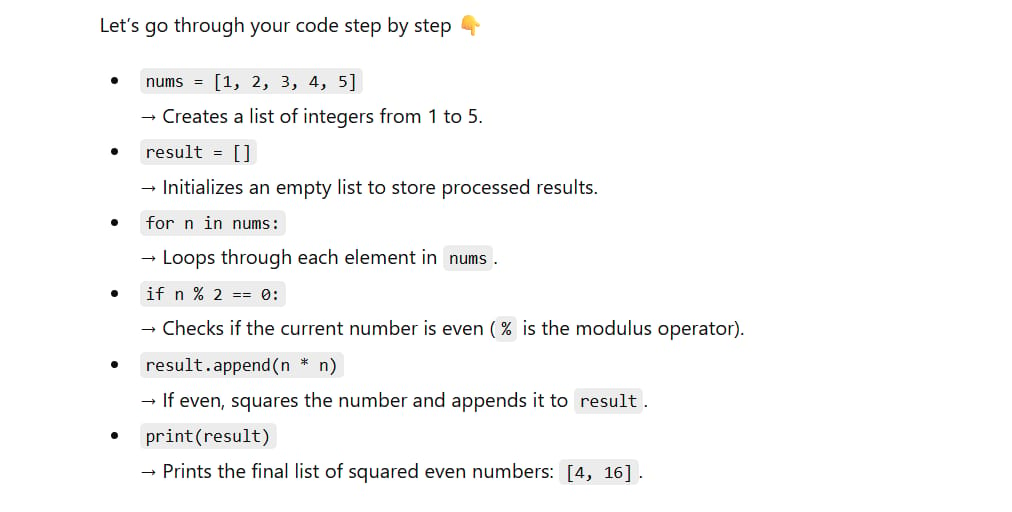
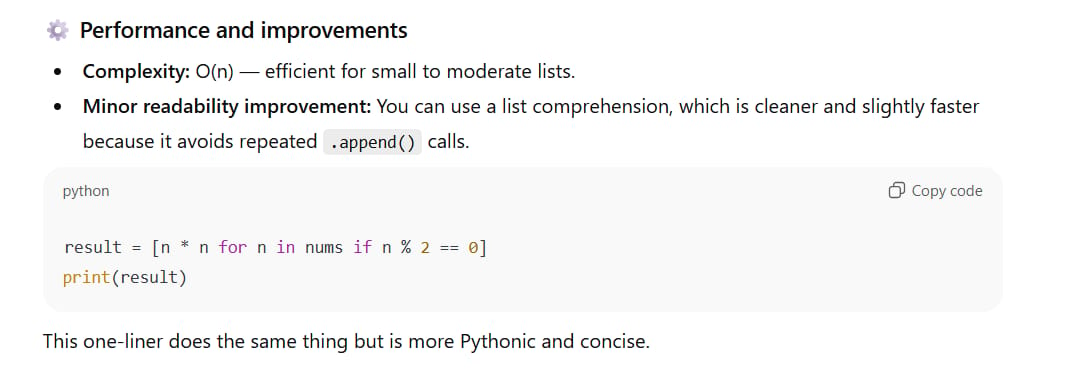
Recipe 2: Finding Bugs (Debugging)
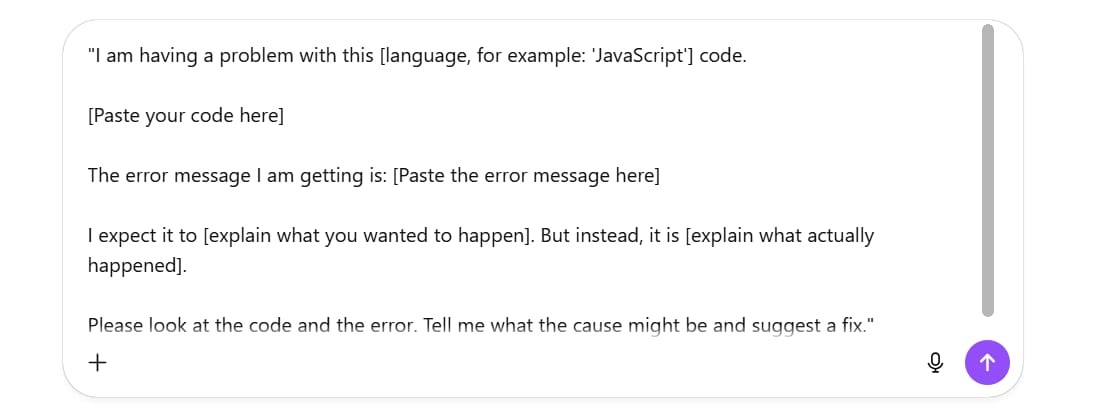
"I am having a problem with this [language, for example: 'JavaScript'] code.
[Paste your code here]
The error message I am getting is: [Paste the error message here]
I expect it to [explain what you wanted to happen]. But instead, it is [explain what actually happened].
Please look at the code and the error. Tell me what the cause might be and suggest a fix."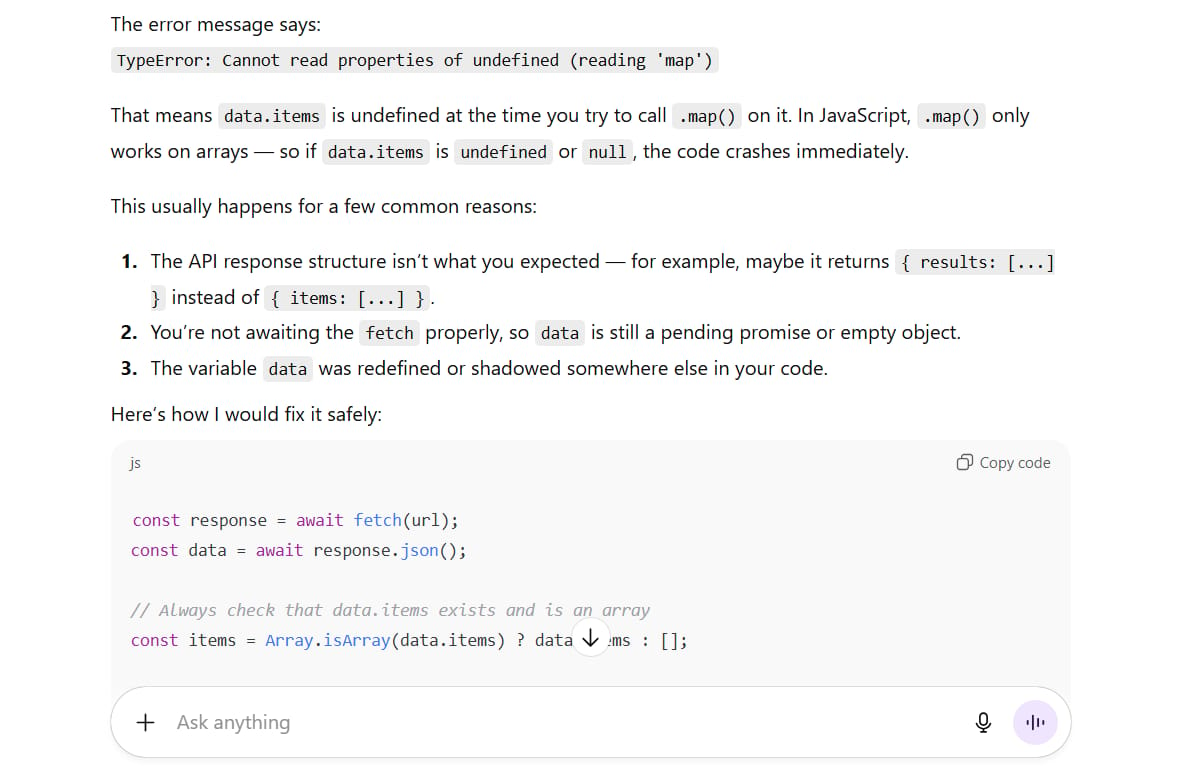
As you can see, to make good "recipes," you need to know how to write clear instructions.
And when the AI gives you a result, you also need to know howto edit it. No matter how many AI tools you have, how you write is the skill that makes everything else work better.
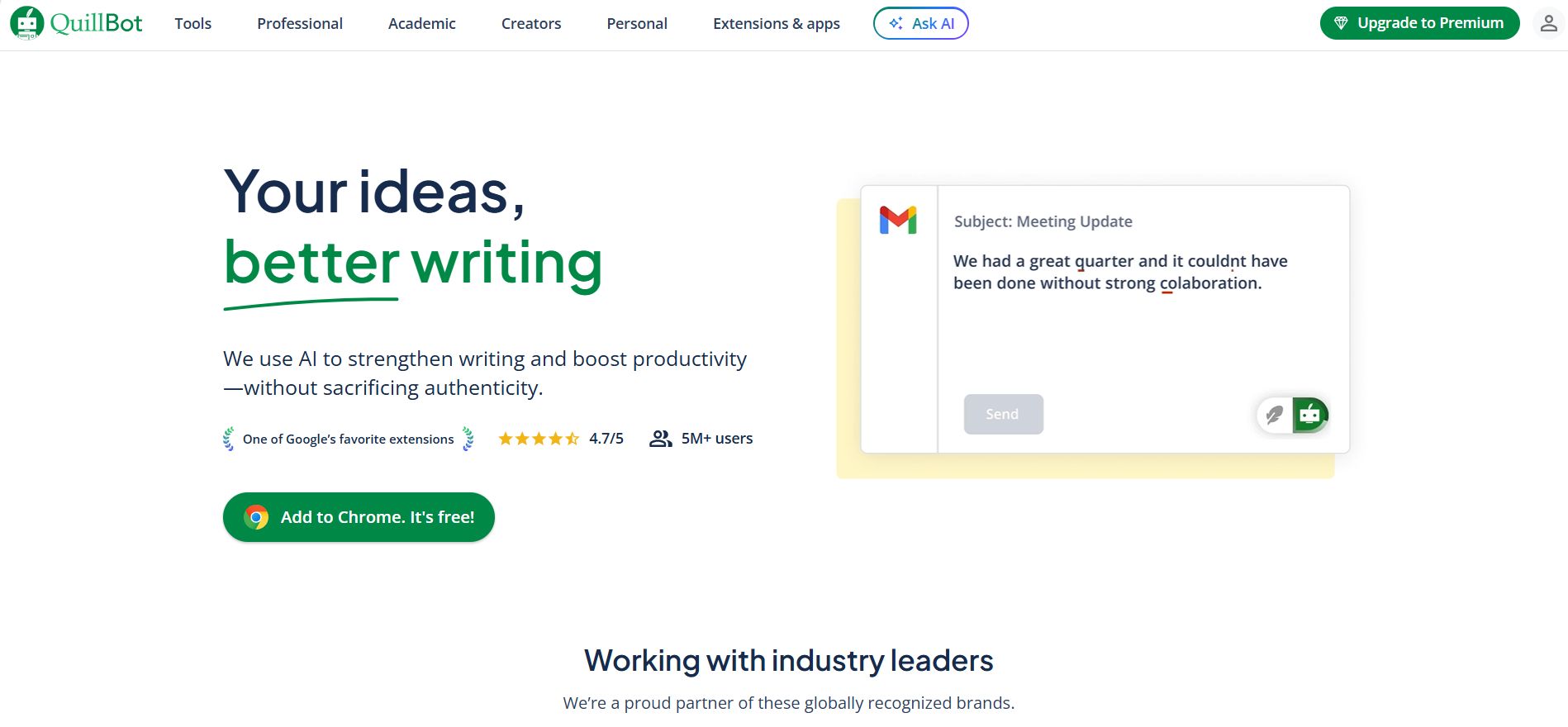
It makes a difference when you are sharing ideas with your boss, giving instructions to AI, writing emails to clients, or speaking in a meeting. How you organize your thoughts and turn them into words changes everything.
This is where writing helper tools can be useful. For example, tools like Quillbot can help. With their extensions, you can quickly make your writing sound more confident and natural. For emails, client proposals, or social media posts, they help you sound professional.
Features like the grammar checker and paraphraser fix your language. You don't need hundreds of AI tools. You just need to know how to write better, and tools like Quillbot can support you.
Part 3: "Human Skills" That AI Cannot Copy
Now let's talk about something very important: human skills. These are the skills that AI cannot replace. They are what will keep you valuable, no matter how good AI gets.
AI is very good at processing data and doing tasks. But it is not good at thinking deeply, making difficult decisions, or connecting with other people.
Skill 1: Thinking Clearly (Breaking Down Problems)
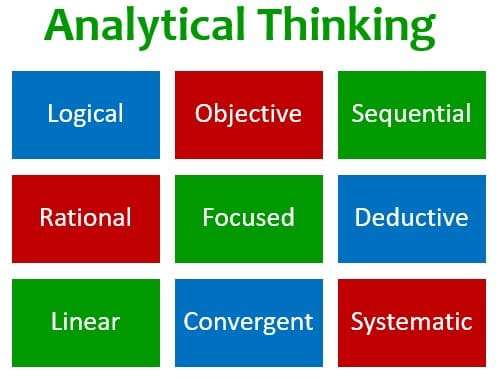
The first skill you need is analytical thinking. This means learning to look at a problem, break it into smaller pieces, and study the whole situation.
You need to understand:
What causes what?
How do the different parts connect?
How can you find the right answer at the end?
Learn to think critically. Don't just accept everything you hear. Ask questions, look deeper, and really understand what is happening.
How to practice this skill?
There is a simple method called the "5 Whys". When you have a problem, ask "Why?" five times to find the real, deep cause.

Example:
Problem: "Our website sales went down this month."
Why? "Because fewer people visited the website."
Why? "Because our Facebook ads stopped running."
Why? "Because the money for ads was cut."
Why? "Because the finance team thought the ads were not working."
Why? "Because the marketing team did not send them the report showing sales from the ads."
Discovery: The real problem was not "sales." It was "bad communication between the marketing and finance teams."
AI can help you get the data (e.g., "Tell me the website traffic for this month"), but it cannot do this "5 Whys" investigation for you. That is a human job.
Skill 2: Making Good Choices
The second skill, which is connected to the first, is decision making.

Here is the truth: the most important jobs today are not for people who just take lots of data and put it in Excel sheets. Those jobs can be automated. The real value is in making decisions.
Think about big business decisions: Should a company invest millions of dollars in another company? That is a life-or-death decision. They could lose millions, or they could make billions. It all depends on the decision.
The greatest leaders are paid, not because they work the hardest, but because they make a few good, important decisions each year.
How to practice this skill?
You can start by using simple "frameworks" (models) to help you think. Don't just decide based on a feeling.
Example: A Simple Decision Table
Let's say you have to choose between "Supplier A" and "Supplier B" for a project.
Make a table.
In the columns, list the things that are important to you: "Cost," "Delivery Speed," "Product Quality," "Customer Service."
Give each supplier a score from 1 to 5 for each thing.
Criteria | Supplier A | Supplier B |
Cost (lower is a better score) | 3 | 5 |
Delivery Speed | 5 | 3 |
Product Quality | 4 | 4 |
Customer Service | 2 | 5 |
Total Score | 14 | 17 |
Looking at this table, Supplier B looks better. But now, your human thinking starts: "Wait, 'Delivery Speed' is actually the most important thing for this project, two times more important than anything else."
So, you make the human decision to choose Supplier A, even with a lower total score, because it scored highest on your most important factor. AI can fill in the table, but you decide which factor is most important.
Skill 3: Talking And Writing Clearly
Even if you can think clearly and make good decisions, it's not enough. If you don't learn how to communicate clearly - in both writing and speaking - you will always miss out.

You will become the person in the back office who just works with data and then, maybe, gets replaced by AI.
Knowing how to communicate clearly is so important today. This is for:
Talking to your teammates
Talking to your boss
Speaking in a meeting
And even telling AI what you want (like we saw in Part 2)
All of these need you to be a good communicator. You need to know how to think about what you want to say, break it down, and deliver it step-by-step.
The most important thing is to make sure people can understand the "main point" of what you are saying. Here's how:

Write Like You Talk: When writing emails or messages, use simple words. Don't try to use complex words to sound smart. Being clear is most important. Use short sentences. Use bullet points.
Speak Slower: When you talk, give people time to process the information. Don't be afraid of pauses. It is better to speak slowly and be understood than to speak quickly and be confusing.
Give Context: Never guess that other people know what you are thinking. Start by saying, "I want to talk about [topic] because [why it is important]."
Summarize at the End: When you finish, summarize the main points. "So, to review, the three things we need to do are: one, two, and three."
Make it super easy for people to understand you. That is the real key.
Skill 4: Learning How To Learn (And Not Fall Behind)
The fourth skill might sound strange, but it is learning how to learn.
Here is a shocking fact: according to a report from the World Economic Forum, 39% of all core skills today will completely change by 2030. That is only a few years away!
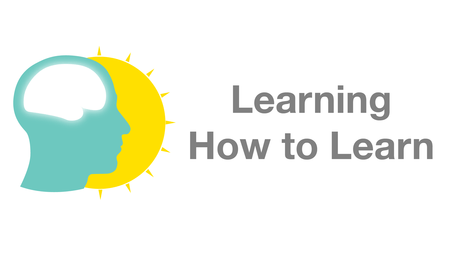
This means you need to learn how to learn as fast as possible. In today's world, it's not about learning everything from your college degree or from one course you took. It's about always learning and improving yourself while you are working.
Let me give you some examples:
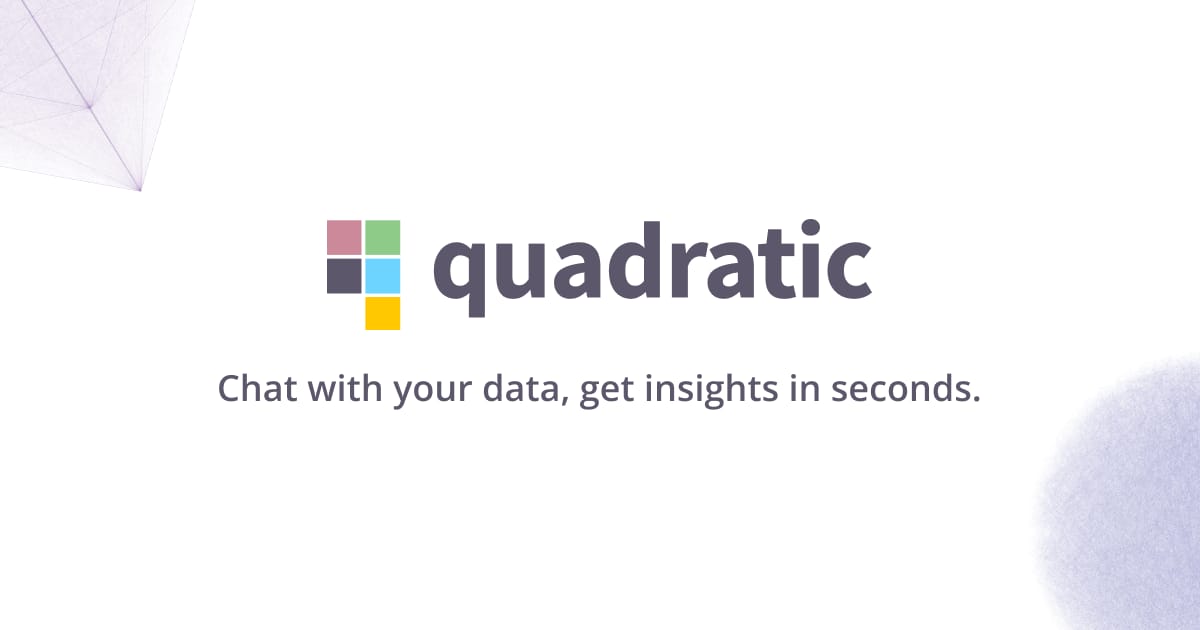
Yes, you used Excel before. But now there are tools like Quadratic that help you work with data better by mixing code (like Python) right into your spreadsheet.
Yes, you learned to make presentations on PowerPoint or Canva. But now there is Gamma which can create beautiful presentations in minutes from just a few points.
Yes, you used Excel formulas. But now you have Gemini, where you can ask in plain language ("Help me make a formula to get all sales over $500 from column B") and it will write the formula for you.
Do you know how to use these new tools? Only someone who is learning and improving every day would know about them. And when you know these tools, you can bring them to your job, impress your team, and show everyone what is possible.
The single most important key to growing your career fast is being someone who is willing to learn as much as possible, as fast as possible.
Here is what you should do: take some time every day or every weekend just to learn new things. It could be:
Online courses
News articles
Research papers
Podcasts
YouTube videos
But here is the important part: it's not just about reading that book or watching that video. It's about taking the lessons and insights and applying them in your real life today. That is what really matters most.
Part 4: Learn To Automate Your Work (Let Computers Do The Boring Jobs)
The fourth main point is knowing how to automate anything you do in your business or job.

Here is why this matters: companies are going to automate things anyway by hiring experts or AI engineers. So why don't you be the person who steps up and learns how to automate the things you do?
Be the person who automates your company's workflows. That will make you super valuable.
How do you learn this? There are so many tools available that do not require you to know code. These are called "no-code" tools.
These tools can help you automate almost anything. They work by connecting your different apps (like Gmail, Google Sheets, Slack, etc.) and making them "talk" to each other.
Here is what you need to do:
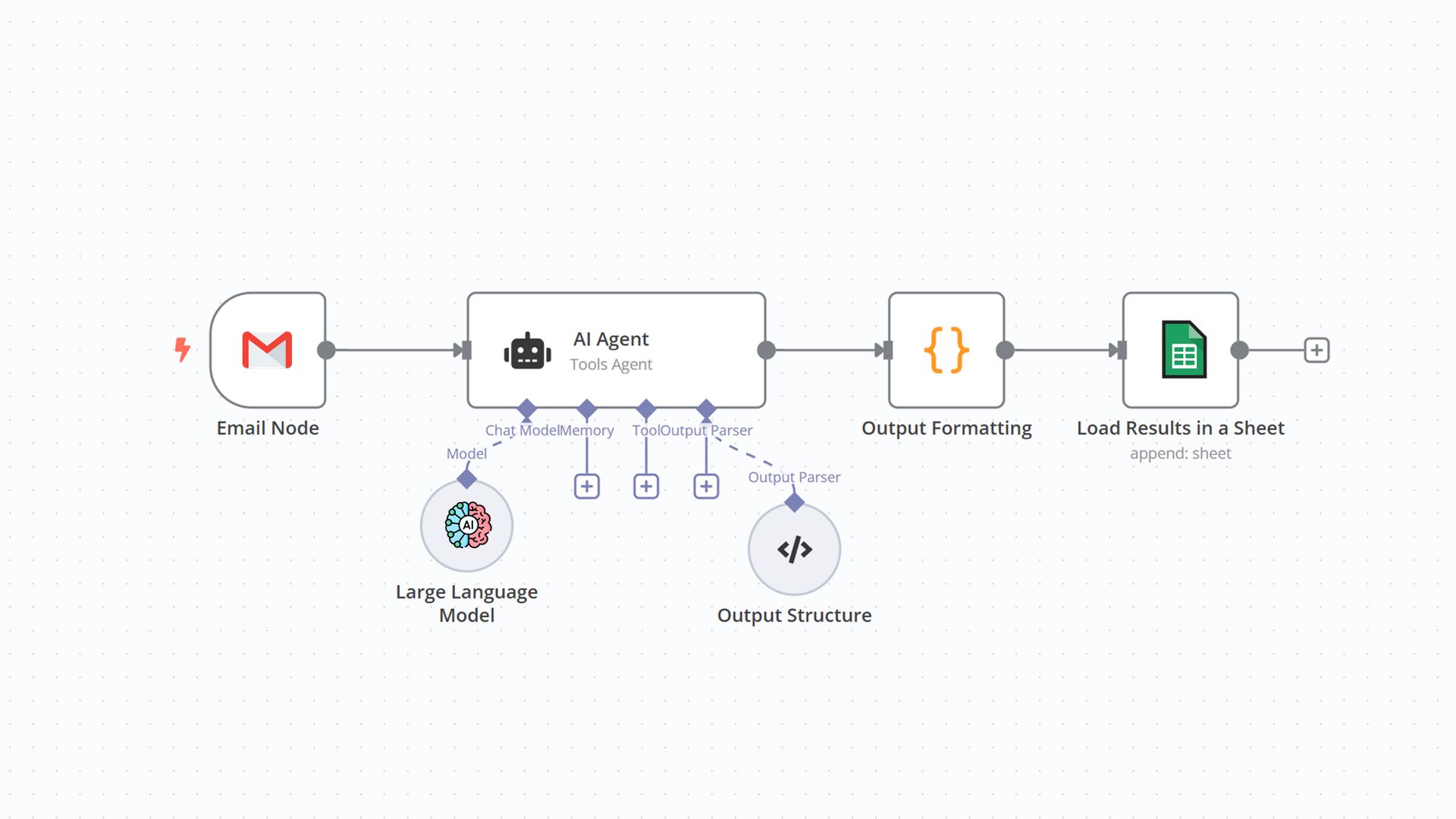
Learn to use one of these automation tools (they all have free courses on their websites).
Understand the processes in your business - This could be creating invoices, sales emails, or other regular tasks.
Figure out how to do these tasks with automation tools.
Add these tools into your company's workflow.
You don't need to be an engineer. You just need to be curious and willing to try.
Last but not least, if you really want to be someone your company needs - if you want to be a key person in your industry - learn to create a presence on social media.
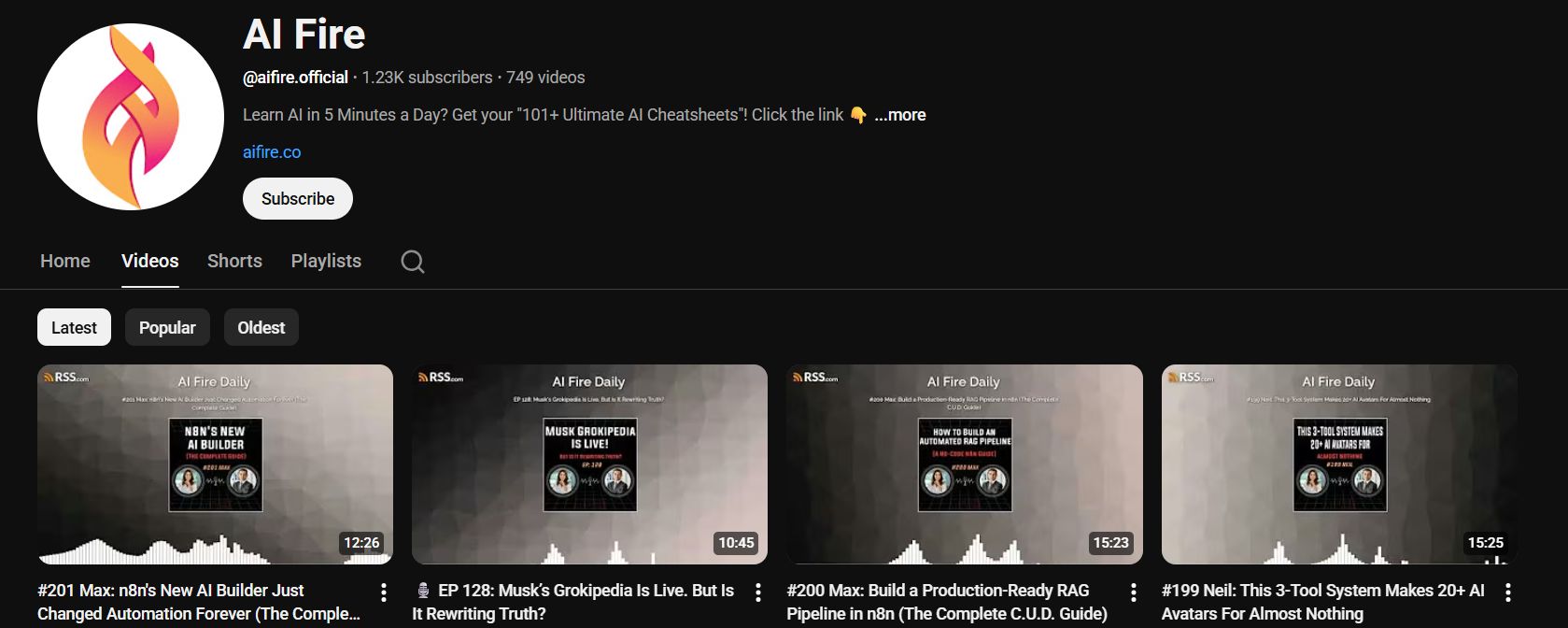
Now, let me be clear: this is not about becoming an "influencer." This is not about creating content just to be on people's feeds all the time.
It is simply about:
Building in public - Share what you are working on.
Sharing your learnings - Tell people what you have discovered.
Talking with the community - Talk to other people in your field.
Engaging with your audience - Reply to comments and messages.
Putting yourself out there - Be visible and easy to find.
Here is what happens: whenever a recruiter looks at your resume, the first thing they do is search for you online. They will go on LinkedIn and see that you are creating something new every week. They will see you are sharing what you are building. They will see you are active and showing effort.
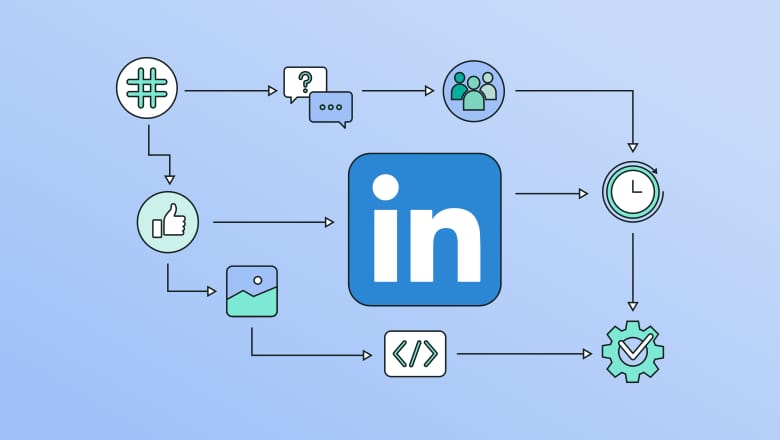
All of that matters. It shows you are truly interested in your field, not just doing it for the money.
These things will give you a
huge advantage and open up more options. Before, you were just applying on job websites and waiting for someone to email you. Now, companies might actually email you because:
You are available.
You are easy to reach.
You have attention on social media.
And here is the best part: it's not even about having thousands of followers. You could have just 500 followers who look at your posts, interact with them, and you interact with other people's posts. That is all you need.
A few simple ideas for LinkedIn posts:
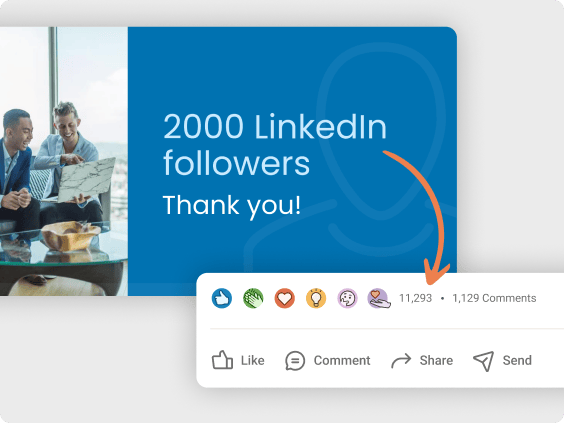
A tool I found: "This week I tried [tool name, e.g., Gamma.app]. It's great for making presentations fast. Here is one thing I liked about it..."
One thing I learned: "I just read an article about [topic]. Here is one interesting idea I learned..."
An AI prompt: "I was trying to get AI to help me [a task]. Here is the prompt I used... It worked pretty well! Do you have any other tips?"
A mistake: "This week I tried to automate [a process] and it failed completely. Here is what I learned..." (People like honesty).
A question: "My team is debating [an industry topic]. What does everyone think about [question]?"
Be consistent. Just share something small and helpful, two or three times a week. That is enough to build your presence and show people you are always learning and growing.
Conclusion
And that is how you can grow your career in the age of AI!
Let me summarize the key points:
Use AI like an assistant, not a calculator - Ask it to play a role, to think with you, instead of just doing small tasks.
Make a "Prompt Recipe Book" - Build your own recipes for repeated jobs to save time and get better results.
Learn human skills - Focus on thinking clearly (5 Whys), making good choices (Decision Table), communicating clearly, and learning how to learn.
Learn to automate - Use tools like Zapier or Make to remove boring work and free up your time for important things.
Share what you learn - Use LinkedIn not to be famous, but to show your curiosity and your effort.
These are not just tips—they are real strategies that separate people who are growing fast from those who are struggling. The AI revolution is here, and you have a choice: you can learn to use it to your advantage, or you can be left behind.
The good news? You now have a clear roadmap. Start with one area - maybe it's learning to use prompt recipes better, or maybe it's improving your communication skills. Take action on one thing today, and then keep building from there.
Remember: AI won't replace you. But someone who knows how to use AI better than you might. So start learning, start applying, and start building the career you want.
The future belongs to those who know how to work with AI, not against it. Now go and grow your career!
If you are interested in other topics and how AI is transforming different aspects of our lives or even in making money using AI with more detailed, step-by-step guidance, you can find our other articles here:
Master AI Marketing: Build Your 24/7 Digital Assistant Without Code!
Earn Money with MCP in n8n: A Guide to Leveraging Model Context Protocol for AI Automation*
Transform Your Product Photos with AI Marketing for Under $1!*
The AI Secret To Reports That Clients Actually Implement
*indicates a premium content, if any
How useful was this AI tool article for you? 💻Let us know how this article on AI tools helped with your work or learning. Your feedback helps us improve! |
Reply